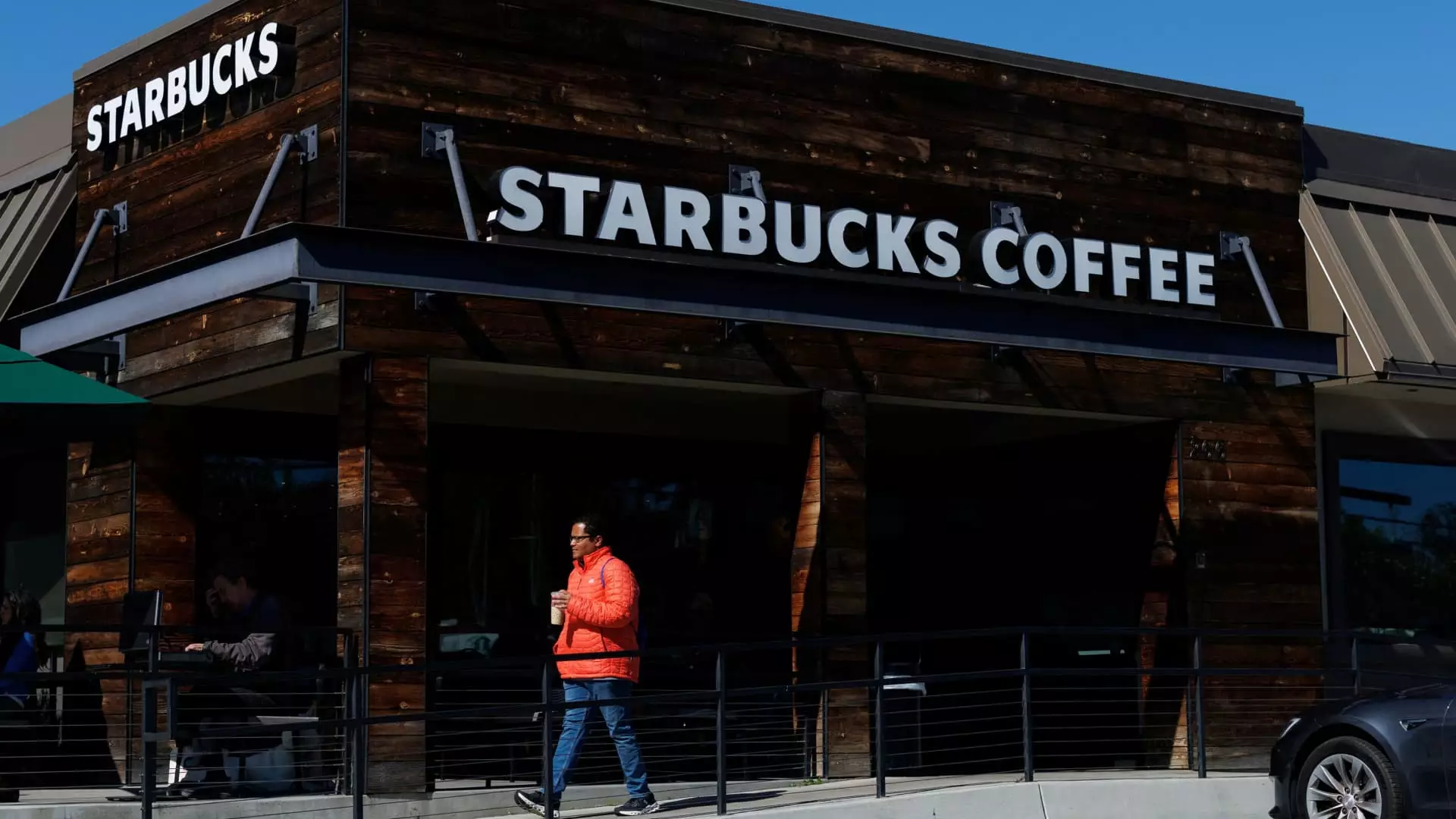The ripple effects of President Donald Trump’s administration on the economy are becoming increasingly evident, particularly in the restaurant sector. As investors grapple with looming recessionary pressures, the stock values of restaurant companies have seen alarming declines. The market’s pessimism does not stem from an immediate impact of tariffs on the industry, but rather from a broader concern regarding consumer spending power. When tariffs hit key imports, they often trigger cascading inflation, which can quickly constrict disposable income. Investors are right to be alarmed; the tightrope walk between governmental policies and market stability has never been more precarious.
Percentage Plunge: A Stock Market Snapshot
In the tumultuous trading sessions that have followed the tariff announcements, we’ve witnessed dramatic stock plummets across the board. Starbucks, the giant coffee retailer, saw its stock drop by over an unsettling 2%. More intriguing, though, is the fact that analysts predicted a drop nearer to 20% since Trump unveiled his tariff policies. The implications are much larger than mere numbers; they expose a fragility in consumer confidence that even an iconic brand like Starbucks struggles to navigate. If famed businesses are caught in this vise, what does it mean for smaller chains and independent operators gritting their teeth through this unpredictable landscape?
Consumer Sentiment: The Silent Killer
UBS analyst Dennis Geiger’s assessment that the “direct cost impact of tariffs on restaurants is manageable” seems to paint a rosier picture than reality would suggest. In truth, consumer sentiment is the silent killer in this scenario. Inflation deriving directly from tariffs could sow seeds of doubt in the minds of potential diners. When the cost of basic commodities rises—coffee, vanilla, bananas—consumers start pulling back. They may opt for making coffee at home, rather than indulging in that third cup of overpriced cappuccino from their local café. Investors in the restaurant industry could be underestimating the profound shift in consumer behavior that even a slight uptick in costs can catalyze.
Global Trade Dynamics and Their Local Consequences
The international complexity of global trade adds another layer to this fast-developing crisis. The Coffee Belt—a region that provides most of the world’s coffee—now finds itself entangled in a political wrestling match that threatens Starbucks’ international sales. This doesn’t just impact stock prices; it creates a wholesome atmosphere of distrust among consumers, especially in regions like China, where anti-Western boycotts could rapidly amplify. Such consequences are not merely theoretical; they project a tangible risk to sales in the second-largest market for the coffee giant. This situation serves as a crucial reminder that geopolitical factors can have insidious effects on local businesses and consumer trends.
Causal Chain: Fast-Casual and Full-Service Dilemmas
Casual dining chains have also felt the brunt of this economic turbulence. Dine Brands, the parent company of Applebee’s and IHOP, saw its shares slide nearly 3%. The perplexing dynamics in the restaurant sector show that even well-loved brands are not safe from the consequences of economic panic. Despite fast-casual restaurants having become a recent darling among investors, Chipotle and others aren’t immune either; their shares dropped by nearly 2%. The contradiction lies in consumers choosing cheap fast food in uncertain times, yet finding it hard to resist the higher-quality offerings of fast-casual chains. This scenario creates a paradox—people want value and a good experience, but as costs rise, they have to choose between the two.
Light at the End of the Tunnel?
Instead of resigning ourselves to doom scrolling through market declines, a spark of hope does emerge from the chaos. Some stocks like Dutch Bros. have shown resilience, rising by over 4% even in the face of broader downturns. These outliers may indicate shifting consumer preferences that could serve as a roadmap for other companies in the sector. As we continue navigationally through this economic storm, it is crucial to believe that adaptability and innovation can lead to renewed growth among restaurant companies.
In times of uncertainty, the restaurant industry must turn to creativity and strategy, ensuring that they realign not just with consumer preferences but also with a marketplace that is changing by the day. Tariffs may impose immediate challenges, but they also open avenues for those willing to pivot. However, the course ahead is fraught with twists and turns—requiring both sharp intellect and agility to survive in these turbulent times.

